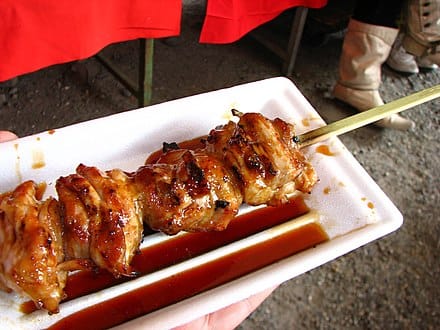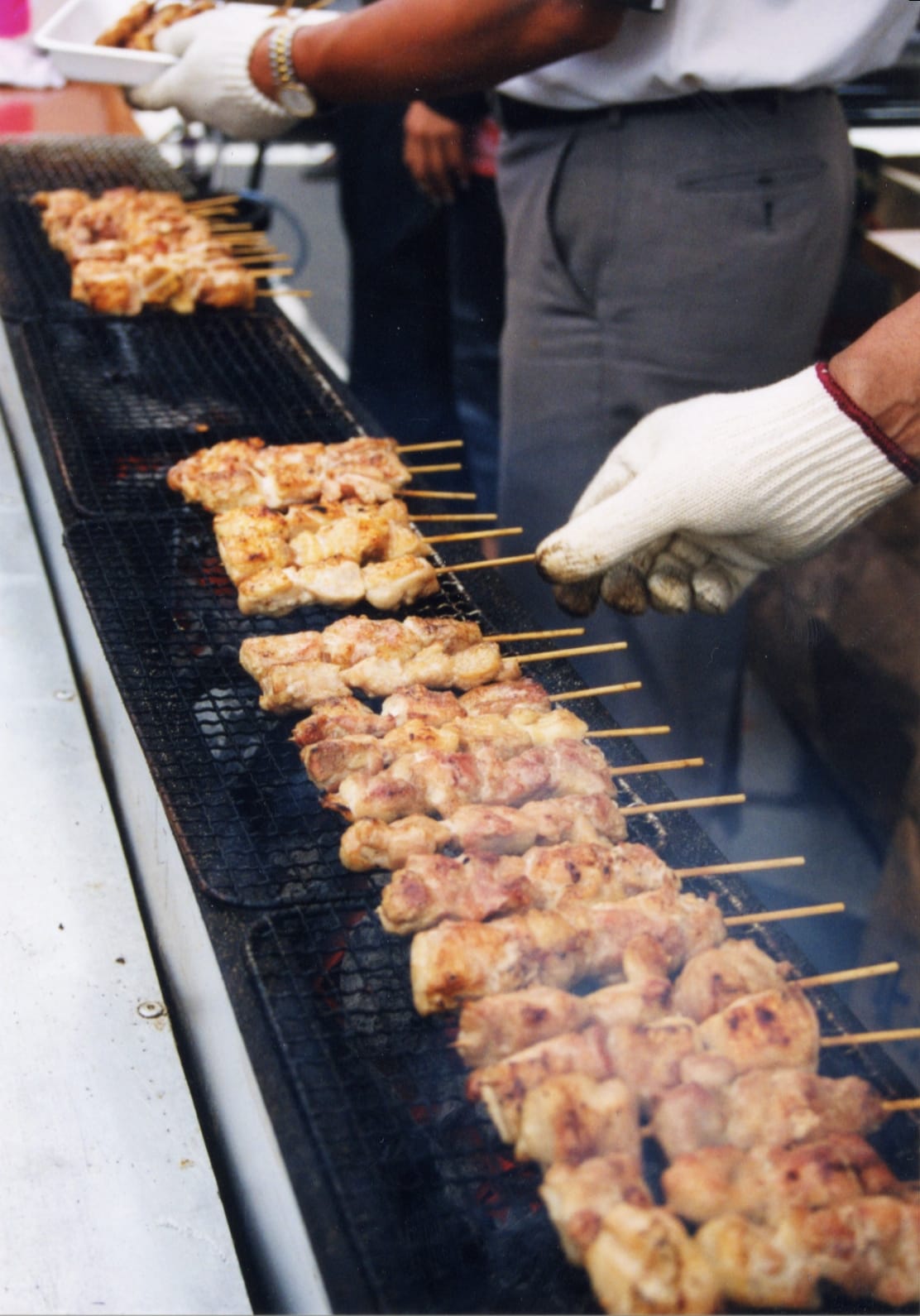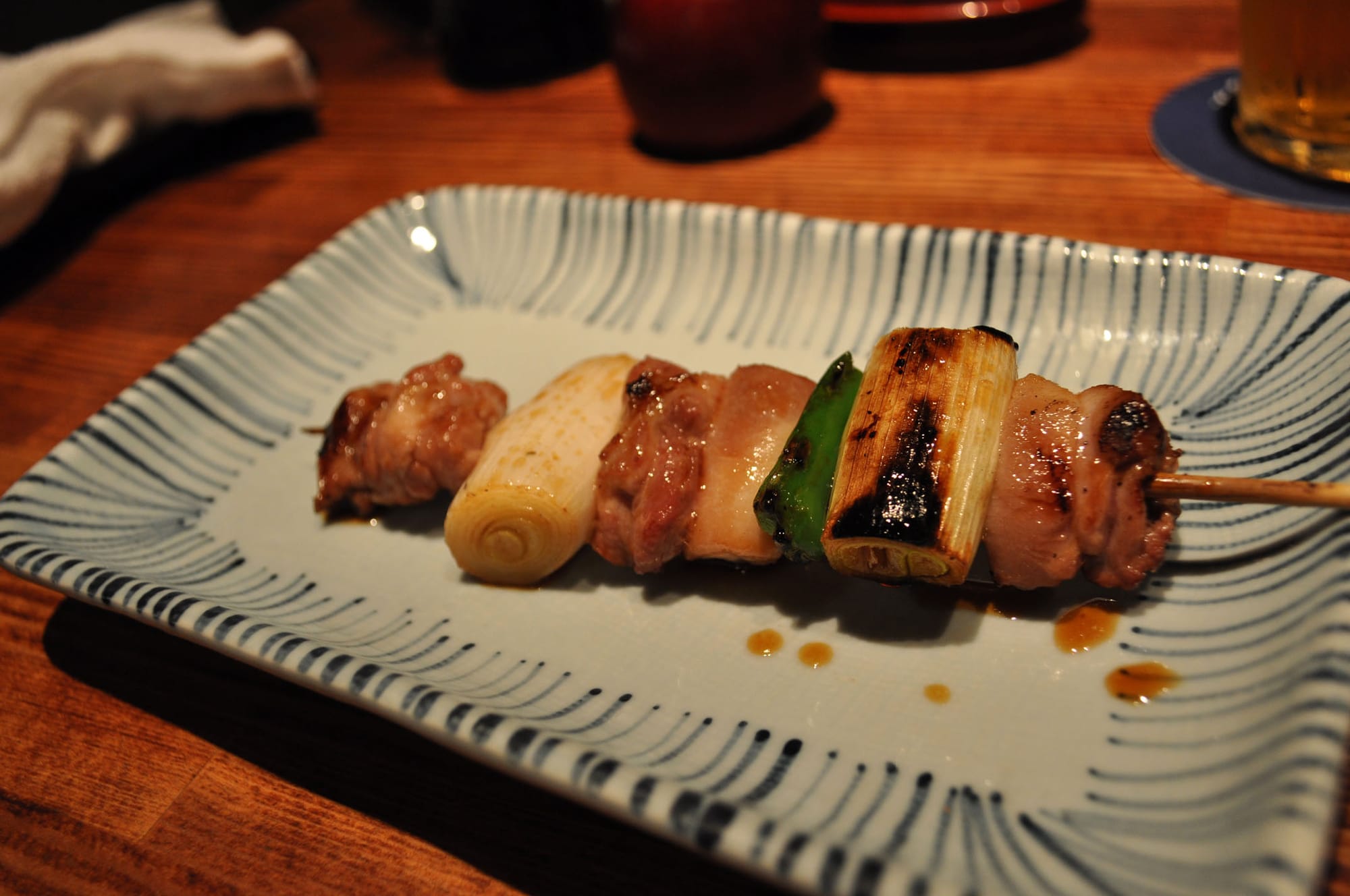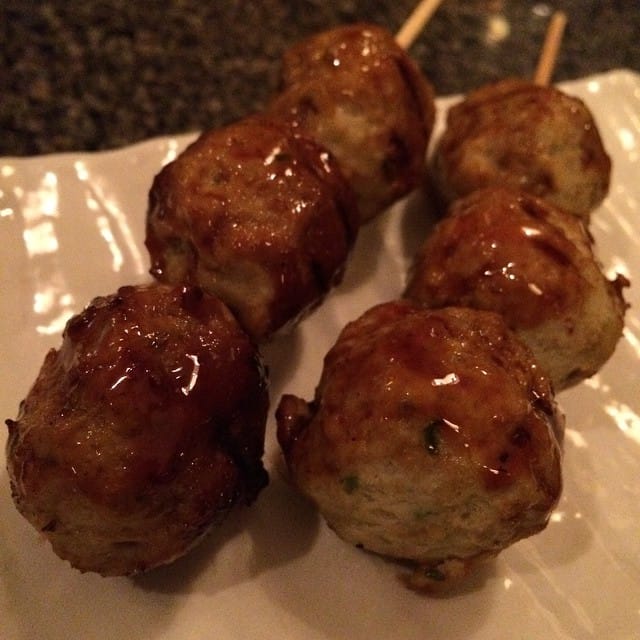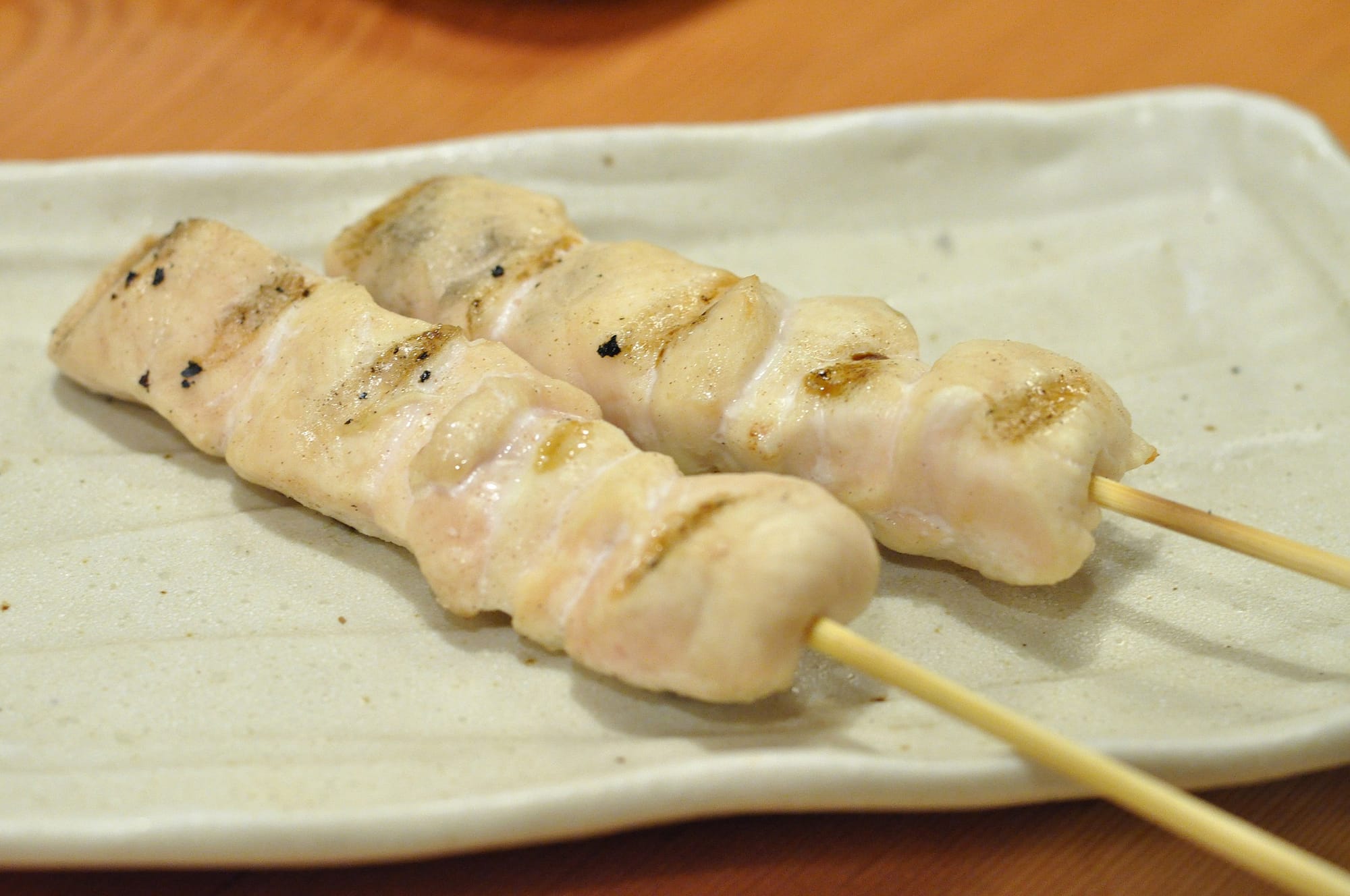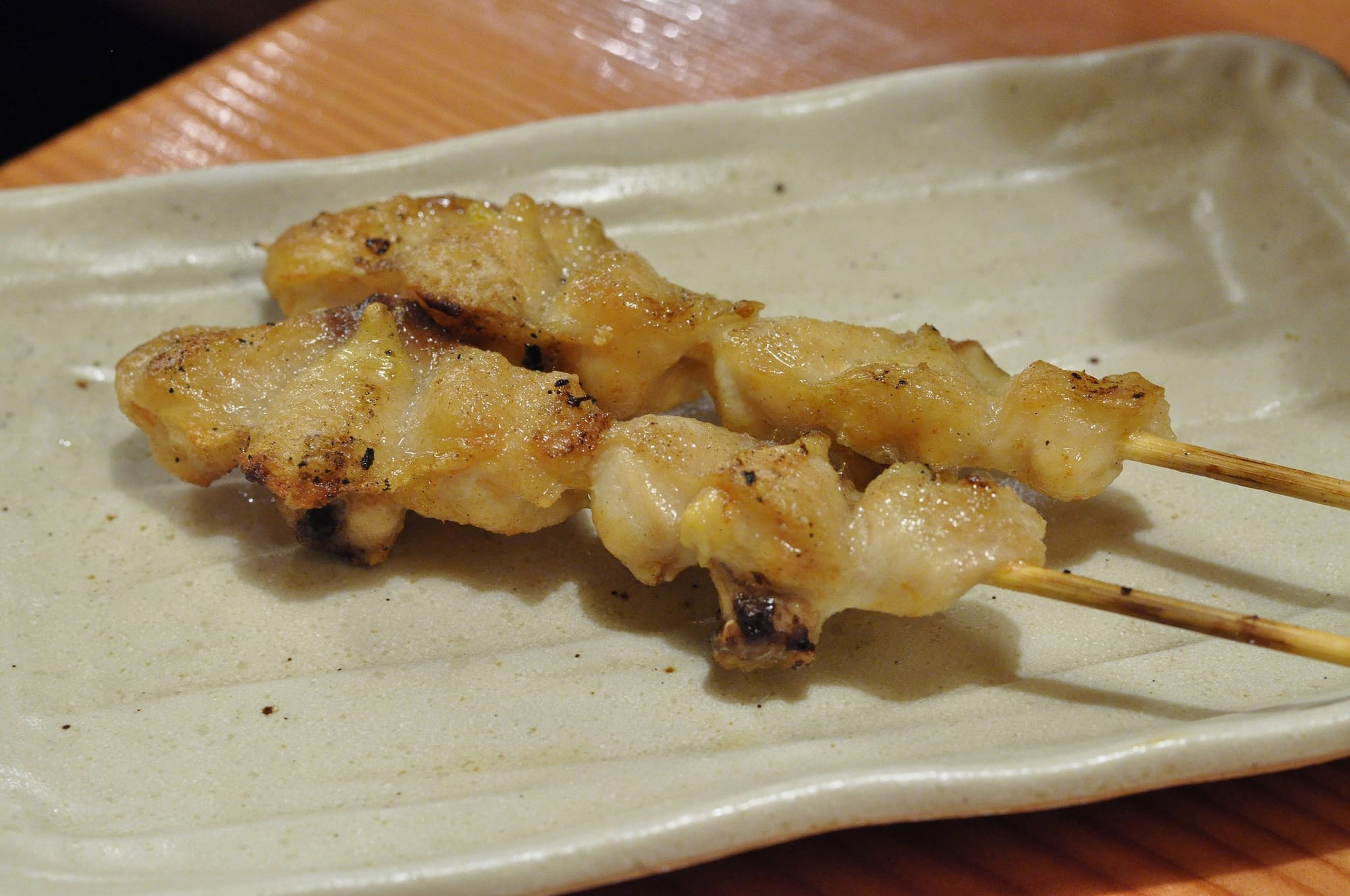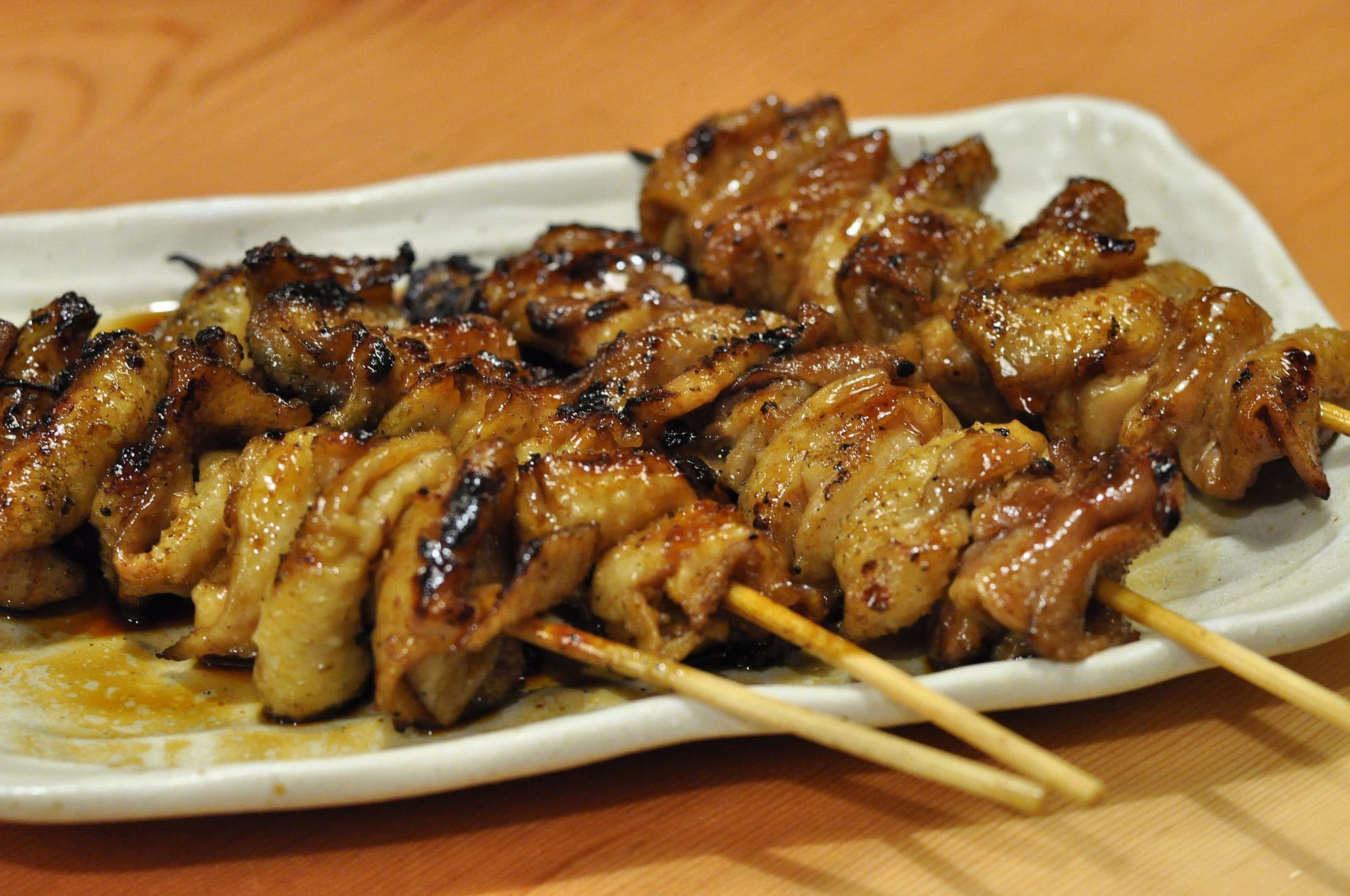Yakitori is one of Japan's representative BBQ dishes, alongside yakiniku. It's an essential part of enjoying drinks at an izakaya after work or satisfying hunger at festival stalls. Ever since my university days, I've found nothing more enjoyable than chatting with friends over yakitori.
The charm of yakitori, which uses various parts of chicken, is that you can enjoy different tastes and textures for each part. From standard thigh meat and negima (chicken and green onion) to tsukune (chicken meatballs), and from rare parts like hatsu (heart) to bonjiri (tail), finding your favorite skewer is one of the pleasures of eating yakitori.
I also think that yakitori reflects Japanese food culture. This is because it's packed with Japanese people's delicate sense of taste, such as the simple salt flavor that brings out the taste of chicken, the sweet and savory sauce, and the grilling technique that makes the outside crispy and the inside juicy.
While yakiniku has been influenced by Korean cuisine, yakitori has developed uniquely in Japan.
In this article, I'll introduce you to the world of yakitori, from basic knowledge to types of restaurants and recommended parts.
When you come to Japan, I hope you'll refer to this article and compare various types of yakitori to find your own favorite skewer! For those who already love Japanese yakitori, I hope this will be an opportunity for new discoveries or reconfirmation.
What is Yakitori?
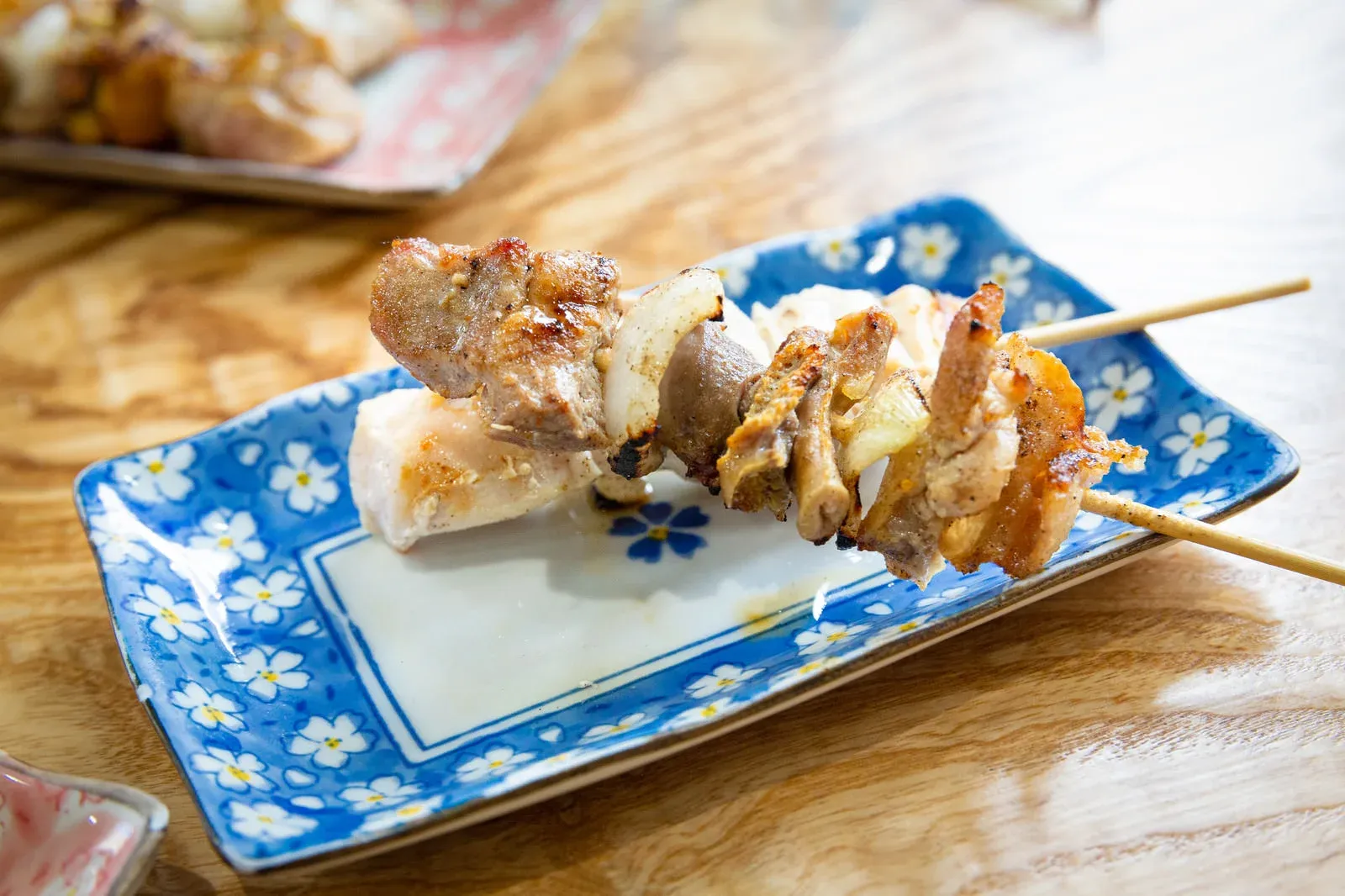
Yakitori refers to a Japanese dish where small pieces of chicken are skewered and grilled over charcoal or on a charcoal grill.
It's often simply seasoned with salt or soy sauce, and its characteristic is that you can enjoy various tastes and textures by using different parts of the chicken.
The ideal is to grill it crispy on the outside and juicy on the inside, and it has become one of the popular menu items representing Japanese izakaya culture.
Ever since my student days, I've found nothing more enjoyable than chatting with friends over yakitori. Its charm lies in being able to savor the original taste of chicken with simple seasoning and enjoy different textures for each part.
Why Japanese People Love Yakitori

So, why is yakitori so loved by Japanese people? I think the reason is that yakitori matches Japanese food culture and national character.
Yakitori is characterized by simple seasoning that brings out the taste of chicken, which is exactly the concept of "bringing out the taste of ingredients" that Japanese cuisine excels at. Also, the point that you can compare various parts suits the preferences of Japanese people who value diversity in food.
Moreover, one of the reasons why yakitori is loved is that it's affordable and easy to eat. It's perfect for dropping by for a drink after work and indispensable for chatting with friends.
Yakitori, which is also popular at festival stalls, is a soul food deeply rooted in Japanese food culture. It's also characterized by being familiar to a wide range of generations, from children to adults.
In this way, yakitori, which has a simple yet profound taste, can be said to be a national dish that brilliantly reflects Japanese taste and values.
Differences Between Yakitori and Yakiniku
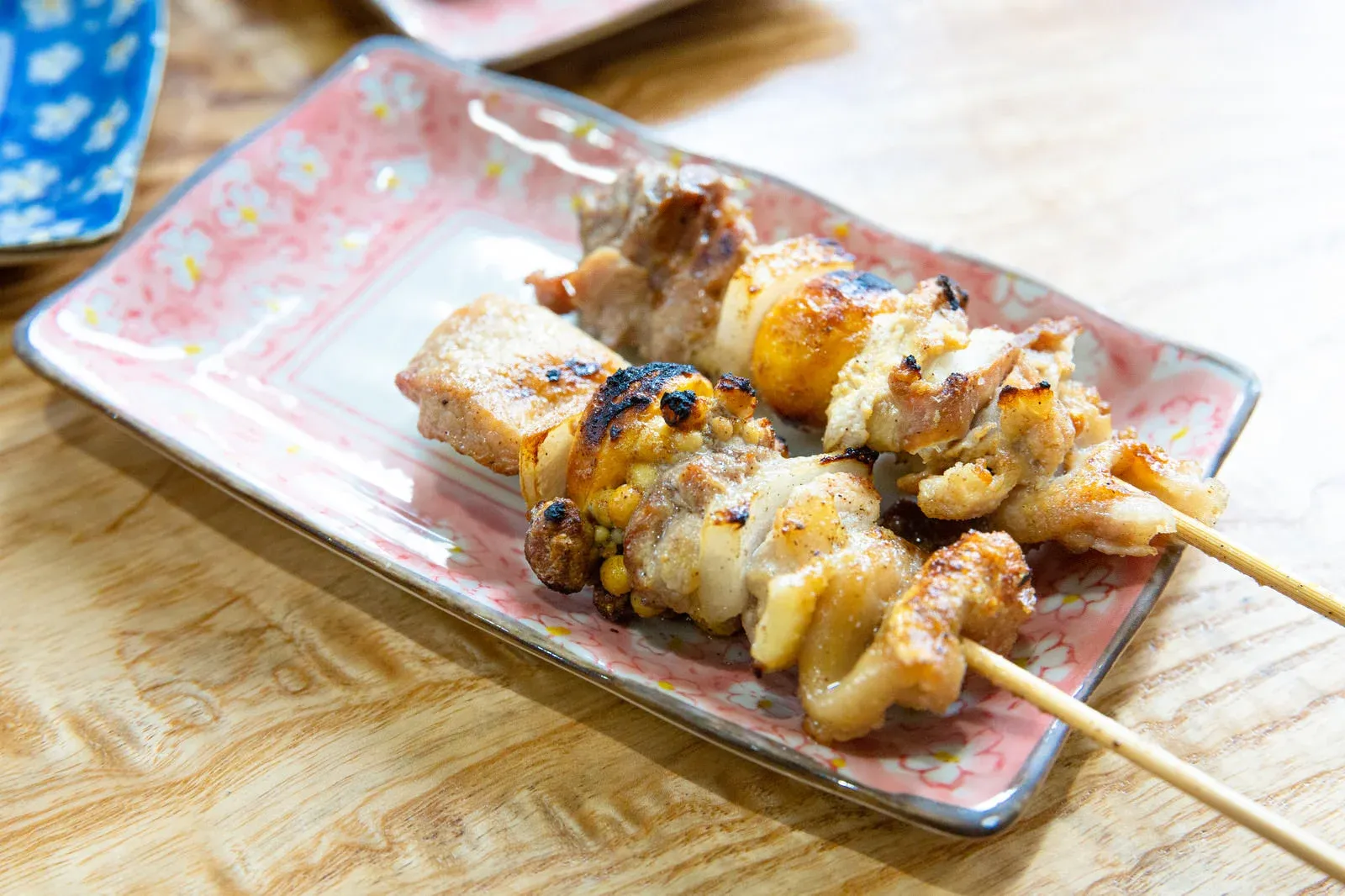
When you hear yakitori, you might wonder, "How is it different from yakiniku?" Indeed, both are similar in that they are grilled meat dishes, but there are several major differences.
First, regarding the type of meat, yakitori mainly uses chicken, while yakiniku mainly uses beef and pork. Also, yakitori is generally skewered with small pieces of meat and grilled, while yakiniku often grills larger pieces of meat directly.
There's also a difference in seasoning. Yakitori mainly uses simple salt flavor or soy sauce-based sauce, while yakiniku is characterized by sweet and savory sauce.
There's also a difference in the types of restaurants that serve them. Yakitori is often enjoyed casually at standing bars and izakayas, while yakiniku is typically eaten at specialized restaurants.
In this way, although both have the common point of being grilled meat dishes, there are differences in the type of meat used, seasoning, and how they're eaten.
Types of Restaurants Where You Can Eat Yakitori
I'll introduce four types of restaurants where you can eat yakitori.
In reality, the genres aren't completely separated, and there are "izakayas specializing in yakitori" and "standing bars mainly serving yakitori."
Yakitori Specialty Shops
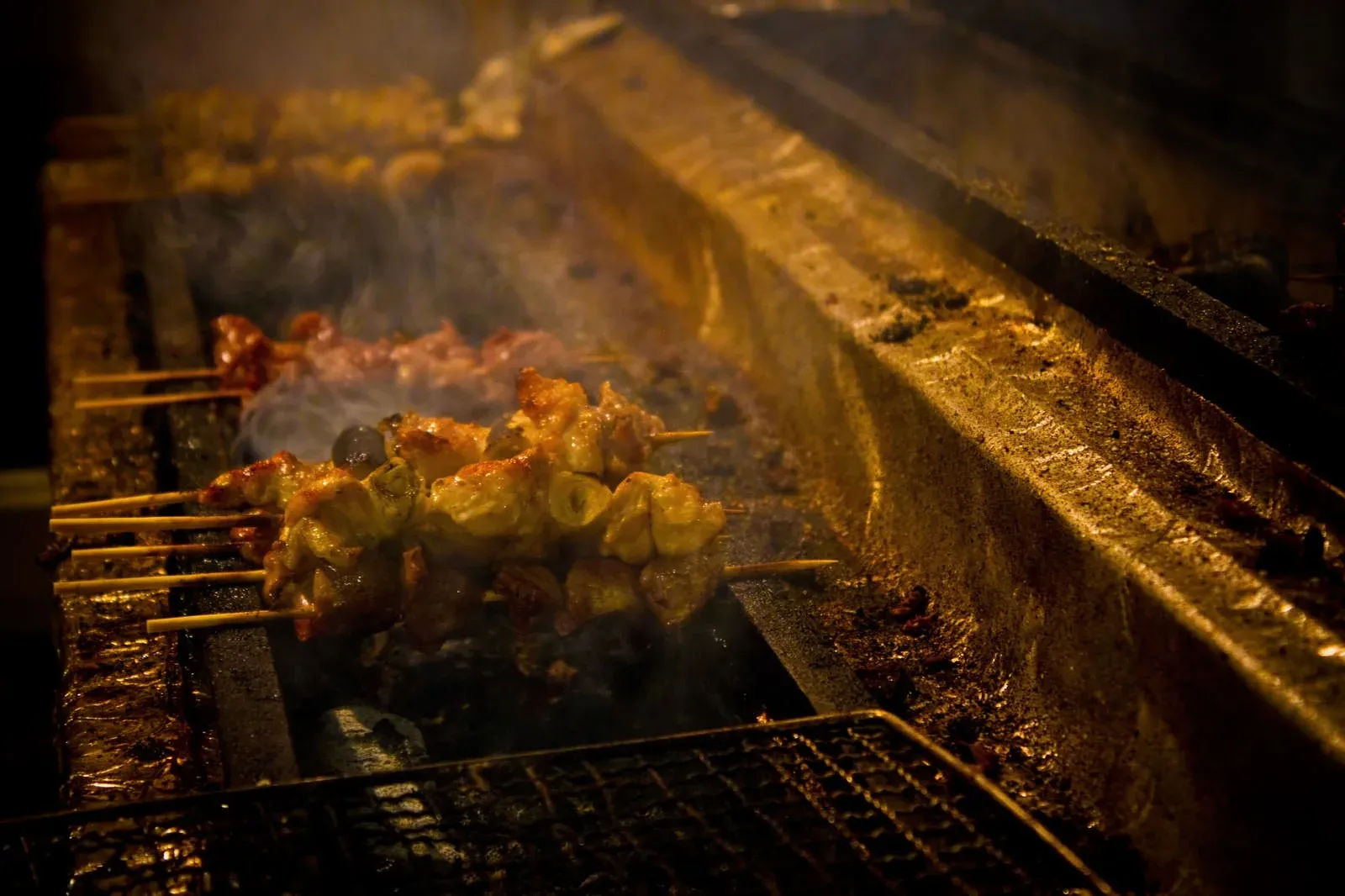
The type of yakitori shop I'd like foreign tourists to visit is "yakitori specialty shops." At these specialty shops that offer yakitori as their main menu item, you can taste authentic yakitori carefully grilled over bincho charcoal by skilled chefs.
Many specialty shops are mainly counter seats, and one of the attractions is that you can enjoy your meal while watching the chef grill right in front of you. They're characterized by their commitment to fresh chicken and often offer rare parts like liver and gizzard.
They also have a rich lineup of alcoholic beverages, so you can enjoy sake or beer that goes well with yakitori.
While there are high-end specialty shops, I recommend popular specialty shops. I think it's best to choose a common people's specialty shop where you can taste authentic yakitori at reasonable prices in a local atmosphere.
Izakaya

If you want to casually enjoy yakitori, I also recommend "izakaya." Izakaya are popular drinking establishments that can be called Japanese pubs, offering reasonable menu items including yakitori and alcohol.
Yakitori is one of the popular menu items at izakayas, perfect as a snack with alcohol. The charm of izakaya yakitori is that it can be easily ordered. It's also valued as a place for banquets and drinking parties, and it's characteristic that there are a wide variety of izakayas from individually owned to chain stores.
Yakitori at izakayas might be inferior in quality compared to specialty shops. But it's a special experience to munch on yakitori happily with friends or colleagues in a relaxed atmosphere.
For foreign tourists, izakayas are also a valuable opportunity to experience Japanese popular culture. Why not try yakitori casually while enjoying the local atmosphere?
As an izakaya where you can casually enjoy yakitori throughout Japan, I recommend "Torikizoku." Please try to find and visit one at your destination.
Website: https://torikizoku.co.jp/
Standing Bars
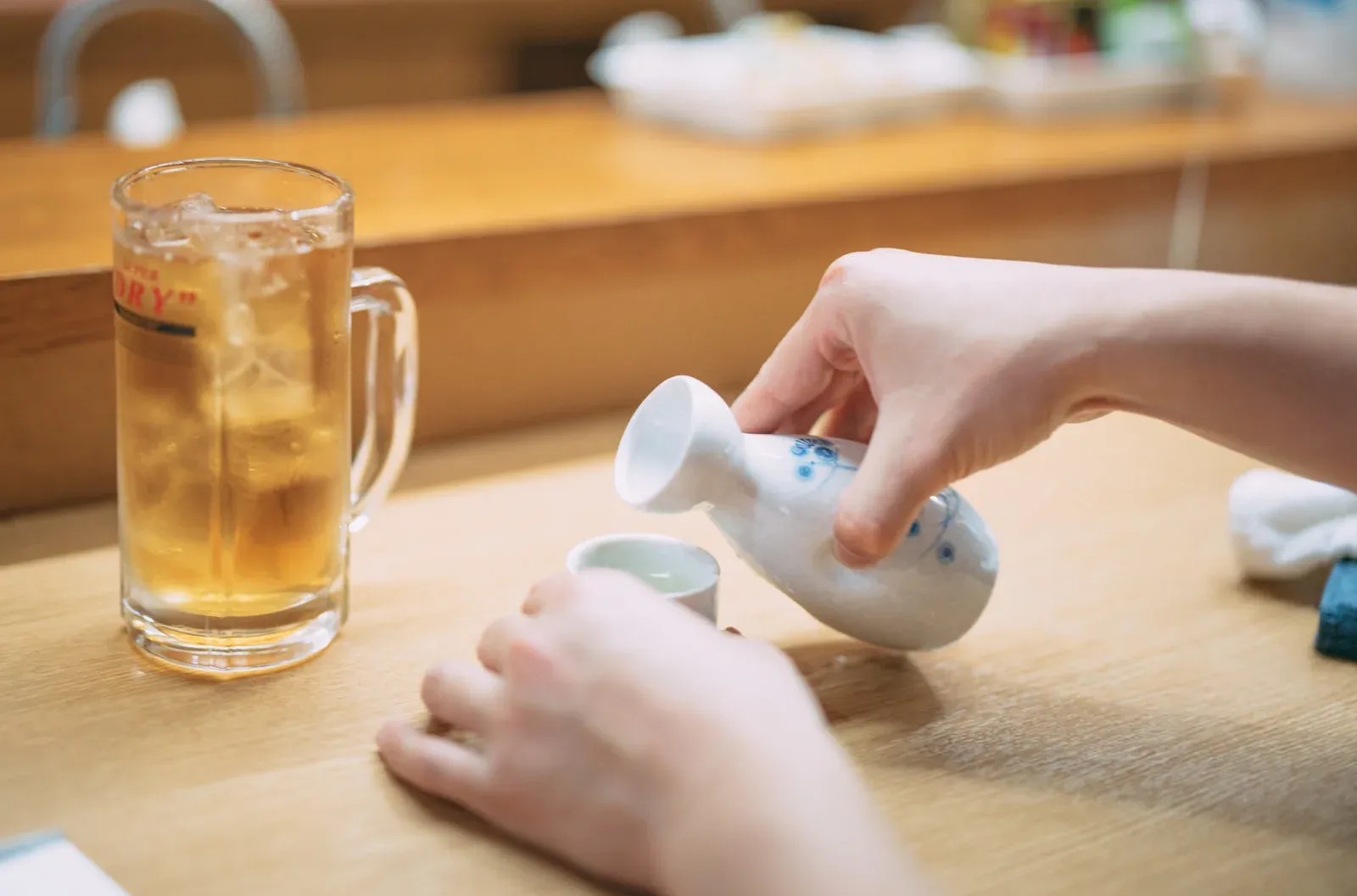
"Standing bars" are also one of the places where you can enjoy yakitori. As the name suggests, standing bars are shops where you drink standing up, characterized by a compact layout with only counter seats. The attraction is that they offer cheap and delicious yakitori and alcohol.
They're also popular as regulars for office workers, and the point is that you can casually drop by on your way home from work. The standard style is to enjoy yakitori with drinks like beer or shochu highballs.
For tourists, there might be a local atmosphere that's a bit difficult to enter. But if you have the courage to step inside, you should be able to experience Japan's common people's food and drink culture. Please enjoy cheap and delicious yakitori and interaction with friendly locals.
Festival and Event Stalls
Source: Wikipedia
I think the true pleasure of yakitori is to taste it at festival and event stalls. Yakitori at stalls can be said to be a summer feature of Japan.
Yakitori eaten in the lively atmosphere of festivals has a special taste different from usual. Yakitori at stalls tends to have a stronger flavor and is undoubtedly delicious.
I get excited just watching yakitori being grilled one after another on the stall's grill. If you're traveling in Japan, please visit a festival or event at least once and try yakitori from a stall.
Popular Yakitori Parts and Their Characteristics Among Japanese People
There are various yakitori parts popular among Japanese people, and knowing their characteristics is essential for enjoying yakitori. From standard parts to rare ones, I'll introduce you to the yakitori parts that Japanese people dearly love.
Momo (Thigh)
Source: Wikipedia
Momo is a simple yakitori using chicken thigh meat, often seasoned with salt or sauce. It's characterized by its juicy meat quality and is a popular part as an introduction to yakitori. When I go to a yakitori shop, I often order momo first.
Negima
Source: Wikipedia
Negima is also a popular part using chicken thigh meat. It's characterized by skewering thigh meat with long green onions in between, and it's often seasoned with soy sauce-based sauce. The balance between juicy meat and sweet green onions is exquisite, loved by a wide range of generations from children to adults.
Tsukune
Source: Wikipedia
Tsukune is a dish made by mixing ground chicken with seasonings like onion, garlic, and ginger, shaping it into balls, skewering, and grilling. Its charm is its unique fluffy texture, and it's typically seasoned with soy sauce or salt sauce. There are also variations that mix other ingredients into tsukune, which is fun for its variety.
Sasami (Chicken Tenderloin)
Source: Wikipedia
Sasami refers to the long, thin meat under the chicken breast. It's a healthy part that's low in calories and high in protein, characterized by its mild taste and soft texture.
Sasami is perfect for those who prefer a light taste. It goes exceptionally well with refreshing seasonings like wasabi soy sauce or plum sauce.
Hatsu (Heart)
Source: Wikipedia
Hatsu is the chicken heart part, characterized by its chewy texture and rich taste. Some people might not like its smell, but it's a popular part among yakitori lovers. I also had resistance at first, but once I tried it, I found its taste addictive. It goes well with salt sauce or miso sauce, so please give it a try.
Bonjiri (Meat Around the Tailbone)
Source: Wikipedia
Bonjiri is a small meat part around the base of the chicken's tail. Its charm is its unique crunchy texture and rich umami. It's relatively high in fat, so you can also enjoy its savory flavor. It's typically seasoned with salt sauce or soy sauce and is one of the popular menu items at izakayas.
Kawa (Skin)
Source: Wikipedia
Kawa is literally chicken skin skewered and grilled until crispy. Salt flavor is common, and its crispy texture is addictively delicious. The more you chew, the more umami comes out, making it perfect as a snack with beer. Although it looks simple, it's a dish where you can taste the true pleasure of yakitori.
Frequently Asked Questions About Yakitori
Foreign visitors trying yakitori for the first time might have various questions and concerns. Here, I'd like to answer frequently asked questions about yakitori.
What Drinks Go Well with Yakitori?
The standard drinks that go well with yakitori are undoubtedly beer and sake. The crisp bitterness and carbonation of beer refreshingly wash away the oiliness of yakitori. The rich aroma and umami of sake further enhance the taste of yakitori.
Other popular choices include highballs. Shochu or white wine also go well with yakitori with a light taste.
Even if you can't drink alcohol, you can still enjoy yakitori deliciously with non-alcoholic beer or soft drinks, so don't worry.
How Do You Eat Yakitori?
The general way to eat yakitori is to bite directly from the skewer.
If you want to enjoy the sauce flavor, it's delicious to eat while dipping in the sauce. Eating everything without leaving anything is also one of the manners when eating yakitori. Let's eat carefully until the end using the skewer.
Is Yakitori Safe in Terms of Hygiene?
Japanese yakitori shops are very careful about hygiene management. They use fresh, high-quality chicken and cook it under appropriate temperature management. Even when skewering, it's done in a clean environment, so you can rest assured.
The grilling station and cooking utensils are also frequently washed and disinfected, so there's no need to worry about hygiene. If you're concerned, I recommend choosing popular shops with high customer ratings or chain izakayas.
How Do You Choose Yakitori Parts?
For yakitori beginners, I recommend starting with familiar parts like negima or thigh meat. It's fun to gradually compare various parts and find your preferences.
For example, if you like soft texture, I recommend sasami or seseri (neck meat), and if you like crunchy texture, I recommend hatsu or bonjiri. However, if you don't like strong smells, it's safer to avoid liver or hatsu.
How Do You Order Yakitori?
When ordering yakitori, it's common to specify the number of skewers and parts you want. Ordering set or course menus is also a recommended option.
Especially when ordering with alcohol, I recommend adding orders at your own pace.
If you have parts you don't like or allergies, it's reassuring to inform the staff in advance. Don't hesitate to consult with them.
Yakitori is a dish where you can enjoy a profound taste with a combination of simple seasoning and various parts. Its characteristic is that it brings out the original umami of chicken by grilling over charcoal.
One of its charms is that you can casually enjoy it in various scenes, from festival and event stalls to yakitori specialty shops, izakayas, and standing bars.
I hope you can now understand why yakitori has been loved by Japanese people for many years.
Finding your favorite part and enjoying yakitori with a beer or sake in hand - why not try creating such wonderful memories in Japan using this article as a reference?

